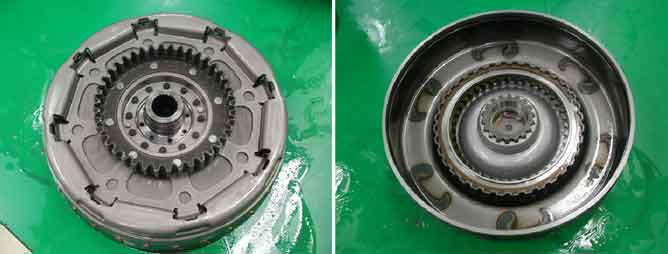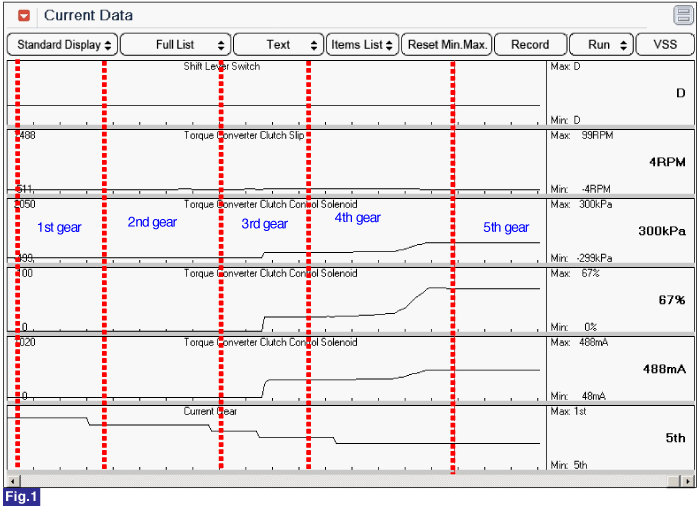

The PCM/TCM controls the locking and unlocking of the Torque Converter Clutch ( or Damper Clutch ), to the input shaft of the transmission, by appling hydraulic pressure. The main purpose of T/C clutch control is to save fuel by decreasing the hydraulic load inside the T/C. The TCM outputs duty pulses to control the Damper Clutch Control Solenoid Valve( DCCSV ) and hydraulic pressure is applied to DC according to the DCC duty ratio value. When the duty ratio is high, high pressure is applied and the Damper Clutch is locked. The normal operating range of the Damper Clutch Control current is from 0.05A(unlocked) to 0.75A(locked).
The PCM/TCM increases the duty ratio to engage the Damper Clutch by monitoring slip rpms (difference vlaue beteween engine speed and turbine speed ).
To decrease the slip of the Damper Clutch, the TCM increases the duty ratio by appling more hyraulic pressure. When slip rpm does not drop under some value with 100% duty ratio, the PCM/TCM determines that the Torque Converter Clutch is stuck OFF and sets this code.
Item | Detecting Condition | Possible Cause |
DTC Strategy |
•
Rationality(Damper clutch open stuck) | ※ Torque Converter Clutch = Damper Clutch
•
Faulty Torque Conveter Clutch
•
Faulty Torque Conveter Clutch Solenoid Valve
•
Faulty Valve Body
•
Fautly PCM/TCM |
Enable Conditions |
•
Duty of "Damper clutch solenoid valve" = 100%
•
Input speed > 0rpm | |
Threshold Value |
•
Calculated slip (engine speed-input speed) > 100rpm | |
Diagnostic Time |
•
More than 5sec | |
Fail Safe |
•
Damper clutch "OFF" |

Fig 1) Torque Converter Operation